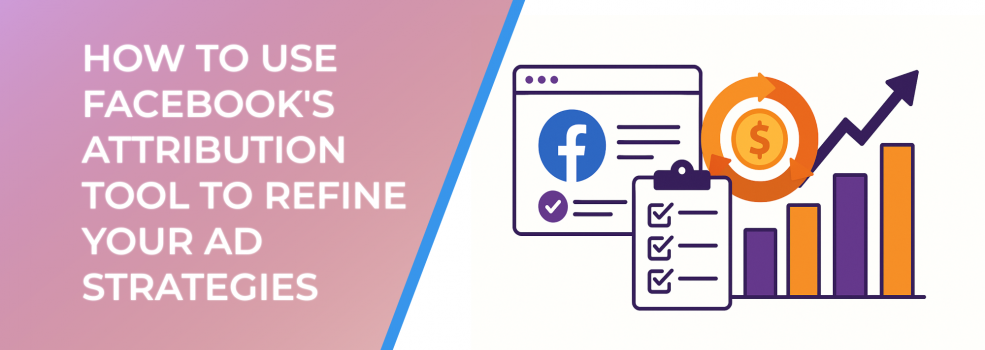Attribution is one of the most overlooked yet powerful components in Facebook advertising. With the platform’s Attribution Tool, marketers can finally understand how users interact with ads over time and across devices—before making a conversion. If you're investing in Facebook ads, understanding attribution is critical for optimizing ad spend, improving conversion tracking, and measuring what really works.
What is Facebook's Attribution Tool?
The Facebook Attribution Tool allows advertisers to see the full conversion path users take after engaging with ads across Meta platforms. Unlike last-click attribution, it provides a more comprehensive view by tracking multiple touchpoints including views, clicks, and device types.
How Facebook’s Attribution Tool tracks multiple touchpoints across devices before a conversion.
Key Benefits:
-
Identifies high-performing ads and channels
-
Tracks cross-device conversions
-
Helps optimize budget allocation
Stat to Consider: According to Meta, 45% of conversions involve multiple devices. Without attribution tracking, you risk underestimating campaign performance.
Keyword Focus: attribution tracking, conversion path, cross-device conversions
Setting Up the Facebook Attribution Tool
To get started:
-
Install Facebook Pixel and ensure it's active on all key pages.
-
Access Attribution through Meta Events Manager.
-
Set your attribution window (e.g., 1-day click, 7-day view).
-
Choose data-driven attribution to let Facebook weight interactions based on impact.
Tip: Make sure to align your attribution window with your sales cycle for accurate results.
Keyword Focus: facebook pixel, data-driven attribution, attribution window
Analyzing Attribution Reports
Once data populates, focus on:
-
Conversion paths: See how users interact before converting.
-
Top sources: Determine which ad sets and placements drive the most value.
-
Time lag reports: Understand how long it typically takes users to convert.
Advertisers using Facebook’s Attribution Tool achieve up to 30% higher ROAS
Stat to Consider: Brands that optimize using attribution reports see up to 30% improvement in ROAS.
Related Reading: How to Measure Facebook Ad Performance the Right Way
Keyword Focus: ad performance metrics, return on ad spend, conversion analysis
Refining Your Strategy Based on Attribution Data
Use insights to:
-
Shift budget to top-performing campaigns
-
Pause underperforming placements
-
Adjust creative messaging based on user journey data
-
Improve funnel alignment from impression to action
Example: If your attribution data shows that 60% of conversions come after two or more touchpoints, consider adding retargeting or middle-funnel ads to support the journey.
Related Reading: How to Segment Your Facebook Ads Audience Like a Pro
Keyword Focus: audience segmentation, retargeting strategy, funnel optimization
Integrating with Other Facebook Tools
Combine the Attribution Tool with:
-
Facebook Analytics for audience behavior
-
Ads Manager for real-time campaign performance
-
LeadEnforce for advanced audience targeting and segmentation
Together, these tools give a holistic view of your campaign effectiveness and provide granular control over every stage of the user journey.
Related Reading: How to Use Facebook Ads Manager for Smarter Campaign Decisions
Keyword Focus: campaign performance, facebook analytics, lead tracking
Conclusion
Facebook's Attribution Tool is essential for advertisers who want to move beyond vanity metrics and get to the root of what drives results. By understanding your customers' full journey and adapting your campaigns based on actual data, you’ll improve performance, reduce waste, and create a smarter ad strategy.
For more powerful targeting and better funnel performance, explore what LeadEnforce can do for your campaigns.

